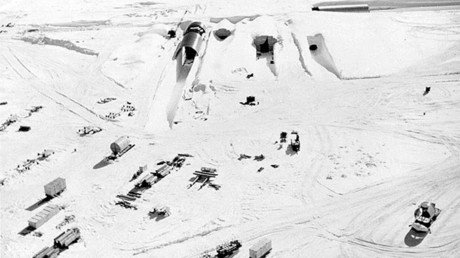Newly declassified documents dating back to the Cold War era show US authorities contemplated storing nuclear weapons in Iceland in the 1950s-60s without alerting the country’s authorities.
Recently declassified State Department documents obtained by the National Security Archive show that US government officials debated using Iceland, where they had a then-operational naval air station in Keflavik, as an “atomic base,” including through “secret deployments.”
A letter from the US ambassador to Iceland at that time, Tyler Thompson, dated August 1960, shows the Icelandic authorities inquired whether US “nuclear weapons were kept at Keflavik or carried through it in transit.”
Despite all references to Iceland being deleted from Thompson’s letter, as this archival release shows, his signature and a daily staff summary from the US State Department, dated June 1960, which refers to the letter, indicate that Iceland was the site on the agenda.
In his letter, Thompson opposes the plan to use Iceland as a nuclear storage site, especially without alerting the authorities. He calls the plan a mistake, but the letter itself indicates that internal discussions were held on the matter.
Thompson warns of a “dramatic row” which could “be expected to have an unfortunate effect on our friends and allies, to affect adversely our interests as far as neutrals are concerned, and to provide a propaganda field day for our enemies” if Reykjavik learned about a secret deployment of nuclear weapons. The ambassador also appears concerned that Iceland could withdraw itself from NATO “in protest” against such deployment.
In the end, these concerns won out and the plan was scrapped.
Another declassified document, a telegram from the US State Department to Reykjavik, shows the Icelandic authorities were concerned with possible nuclear deployment on their soil, and demanded explanations from Washington.
In the telegram, State Department officials warned their Icelandic counterparts against making public statements on the matter as they would violate the policy to “not deny or affirm rumors” about the locations of US atomic weapons to keep them secure from the Soviet Union.
Yet according to other records obtained by the National Security Archive, the Icelandic authorities were later confidentially informed that Washington would “make no move without [the] full consultation and agreement” of Iceland’s government.
On the Archive’s website, researchers note it was not the only time Iceland was touted as a potential US nuclear weapons storage site, citing investigations by historians Valur Ingimundarson and William Arkin, who on different occasions reported that the country was viewed as a potential deployment location should World War III start.
The National Security Archive stresses that the hopes for nuclear weapons on Iceland never came to be, pointing to the allegations made by the US Bulletin of the Atomic Scientists in the late 1990s and the political storm that followed. Citing certain defense papers, the Bulletin reported that Iceland was used for storing atomic weapons, but further research showed the publication had mistaken the country for the Japanese island of Iwo Jima as storage locations. The scandal subsided when the US administration openly denied claims of ever storing nuclear weapons in the Nordic country.
READ MORE: Nordic leaders pledge allegiance to NATO at Washington summit
Iceland, which is the most sparsely populated country in Europe and has no standing army, became a member of NATO in 1949 during the Cold War, hosting a US military presence at Keflavik Airbase from 1951 to 2006.
The relations between Iceland and its NATO allies during the Cold War era were difficult, earning the country the name of a “reluctant” and “rebellious” ally, as Iceland continued to trade with the Soviet Union throughout the period.
In 1986, Iceland hosted the historic summit between US President Ronald Reagan and Soviet premier Mikhail Gorbachev, where the two leaders made significant steps toward nuclear disarmament of their respective countries.
Since Keflavik was shut down, Iceland’s airspace has been patrolled by NATO allies as part of the Icelandic Air Policing operation.


